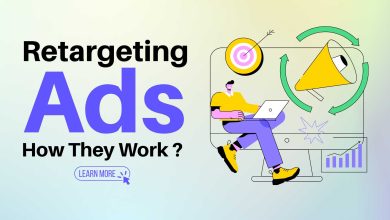The Evolution of the Web: Exploring Web 2.0 vs Web 3.0 vs Web 4.0
Introduction:
The Internet has become an integral part of our lives, transforming the way we communicate, work, and access information. Over time, the web has undergone significant changes, giving rise to different iterations. In this essay, we will explore the evolution of the web, focusing on three key stages: Web 2.0, Web 3.0, and the emerging concept of Web 4.0. We will discuss the characteristics, advancements, and potential impacts of each stage, providing insights into how the web has evolved and continues to shape our digital world.
I. Web 2.0: The Era of User Participation
Web 2.0 represents a significant shift in the way users interact with the web. It emerged in the early 2000s and is characterized by increased user participation, collaboration, and dynamic content creation. Web 2.0 platforms introduced features such as social networking, blogging, and media sharing, allowing users to actively contribute and shape the online experience. Some key aspects of Web 2.0 include:
1. User-generated content: Web 2.0 platforms empowered users to create and share content, breaking the traditional one-way flow of information. Social media platforms like Facebook, YouTube, and Twitter became popular, enabling individuals to share their thoughts, opinions, and media.
2. Interactivity and collaboration: Web 2.0 emphasized collaboration among users, encouraging discussions, commenting, and sharing. Platforms like Wikipedia harnessed the collective knowledge of users to create an extensive online encyclopedia.
3. Personalization: Web 2.0 platforms started offering personalized experiences, tailoring content and recommendations based on user preferences and behavior. This customization enhanced user engagement and satisfaction.
Web 2.0 transformed the internet into a participatory and social space, fostering a sense of community and connectivity among users. However, as technology continued to advance, the web underwent another transformation.
Example of Web 2.0 :
- Social Medias like Facebook, Instagram, Twitter, Pinterest, Snapchat etc
II. Web 3.0: The Era of Semantic Web
Web 3.0, also known as the Semantic Web, represents a more intelligent and contextually aware version of the internet. While there is no universally accepted definition, Web 3.0 builds upon Web 2.0 principles and aims to provide a more seamless and meaningful user experience. Key features of Web 3.0 include:
1. Machine-readable data: Web 3.0 emphasizes the use of structured and standardized data formats, enabling machines to understand and interpret information. This facilitates more sophisticated searches, automation, and intelligent decision-making.
2. Linked data and interoperability: Web 3.0 promotes the integration and interconnection of diverse data sources, allowing for the seamless exchange and utilization of information across platforms. This enhances the accessibility and usability of data.
3. Personalized recommendations and services: Web 3.0 leverages user data and artificial intelligence algorithms to deliver highly personalized recommendations and services. This level of personalization anticipates user needs and provides tailored experiences.
Web 3.0 holds the potential to revolutionize sectors such as healthcare, e-commerce, and education. It enables smarter search engines, intelligent virtual assistants, and personalized recommendations, ultimately enhancing efficiency and user satisfaction.
Example of Web 3.0 :
- Siri and Google Assistant
- Amazon’s Recommendation System
- Smart Home Devices
- Bitcoin
- Coinbase
- Ethereum
- Tron etc….
III. Web 4.0: The Era of Hyperconnected Intelligence (600 words)
Web 4.0, an emerging concept, represents the next stage in the evolution of the web. While it is still in its early stages, Web 4.0 is envisioned as a hyperconnected, intelligent, and immersive web experience. Although there is no consensus on the exact characteristics of Web 4.0, some anticipated features include:
1. Internet of Things (IoT): Web 4.0 is expected to integrate the physical and virtual worlds more seamlessly through the Internet of Things. This means that everyday objects and devices will be connected to the internet, enabling real-time data exchange and interaction.
2. Artificial Intelligence (AI): Web 4.0 will heavily rely on AI algorithms and machine learning to process vast amounts of data and provide intelligent insights. AI-powered virtual assistants, chatbots, and autonomous systems will become more sophisticated and capable of complex tasks.
3. Augmented Reality (AR) and Virtual Reality (VR): Web 4.0 is likely to incorporate AR and VR technologies, offering immersive and interactive experiences. Users will be able to engage with digital content in a three-dimensional space, revolutionizing industries like gaming, entertainment, and education.
4. Blockchain Technology: Web 4.0 may leverage blockchain technology to enhance security, privacy, and transparency. Decentralized networks and smart contracts can facilitate trust and enable secure transactions without intermediaries.
5. Contextual Awareness: Web 4.0 aims to understand user context and provide highly personalized experiences based on location, preferences, and behavior. This level of contextual awareness will enable more intuitive and tailored interactions.
Web 4.0 holds immense potential for various domains, including smart cities, autonomous vehicles, healthcare, and education. It promises a future where intelligent systems seamlessly integrate with our daily lives, offering efficiency, convenience, and new possibilities.
Example of Web 4.0 :
- Internet of Things (IoT) and Smart Cities
- Augmented Reality (AR) and Virtual Reality (VR)
- Artificial Intelligence (AI) and Cognitive Computing
- 5G Connectivity etc…..
Conclusion:
The web has evolved significantly over the years, transitioning from Web 2.0 to Web 3.0 and potentially into the future of Web 4.0. Each stage brings new advancements, transforming the way we interact with information, collaborate, and access services.
Web 2.0 introduced user participation, allowing individuals to generate content and foster online communities. Web 3.0, with its focus on semantic web and intelligent technologies, offers a more personalized and connected experience. Meanwhile, Web 4.0, still in its nascent stages, envisions a hyperconnected and immersive web experience through IoT, AI, AR/VR, and blockchain.
As we move forward, it is crucial to consider the ethical, privacy, and security implications of these advancements. The power of the web lies in its ability to empower individuals, facilitate innovation, and bridge gaps between people and information. By understanding the evolution of the web and embracing the opportunities it presents, we can shape a digital future that is inclusive, empowering, and beneficial to all.



